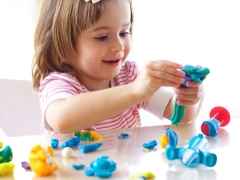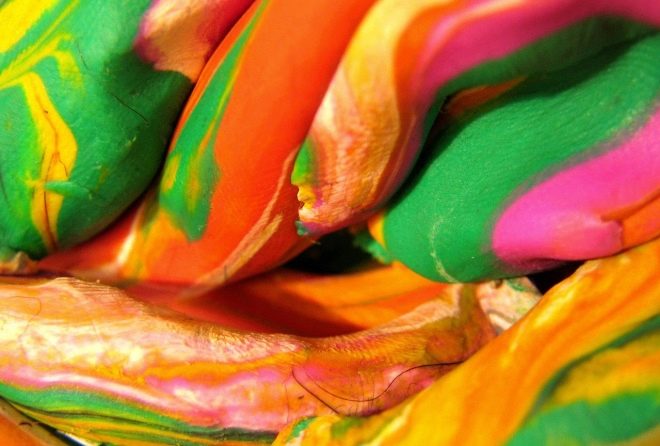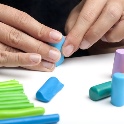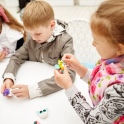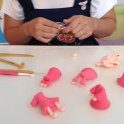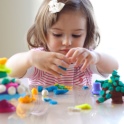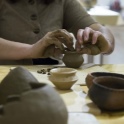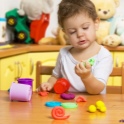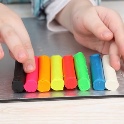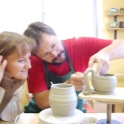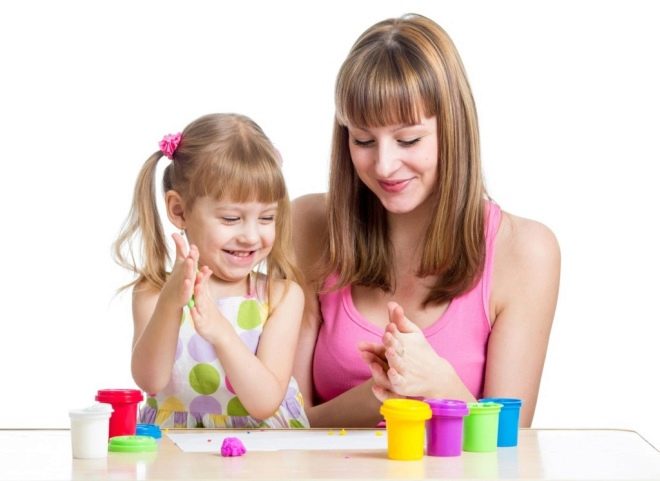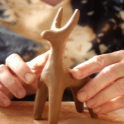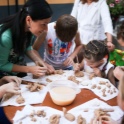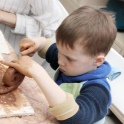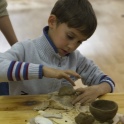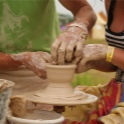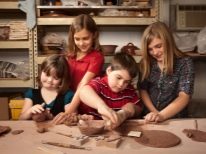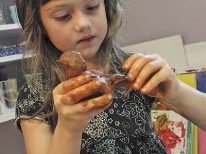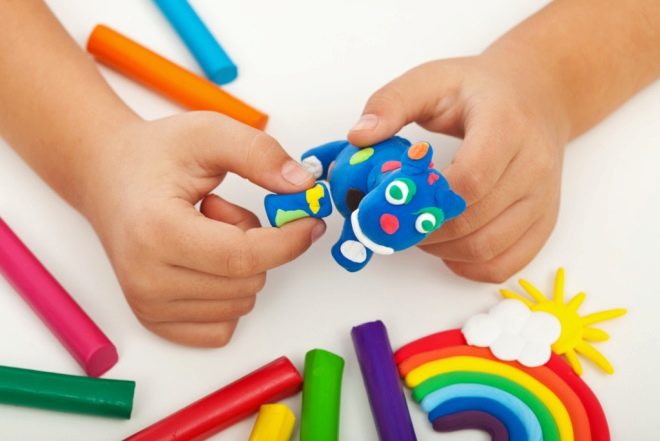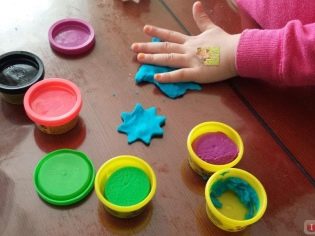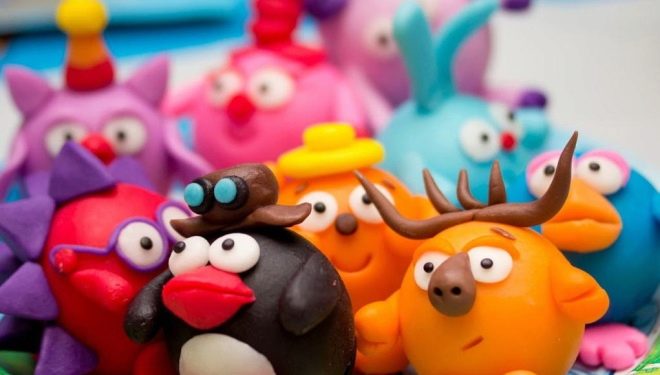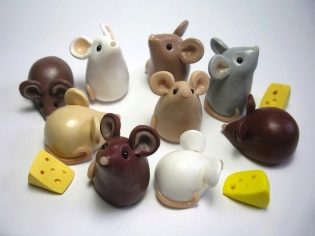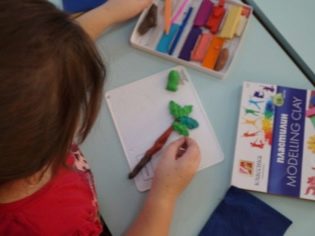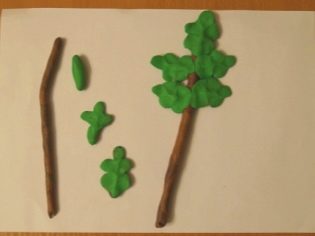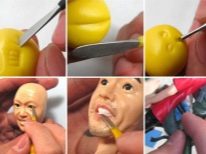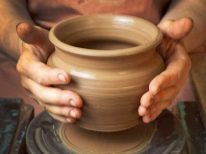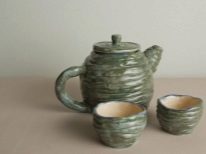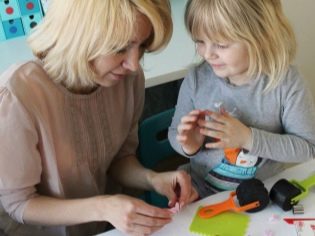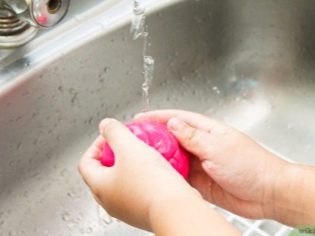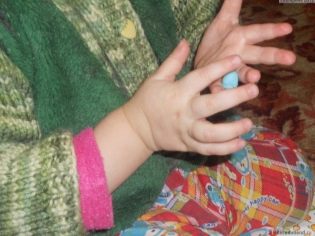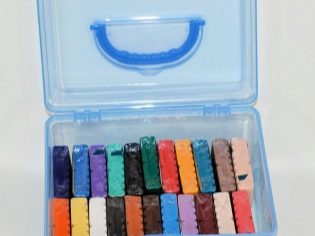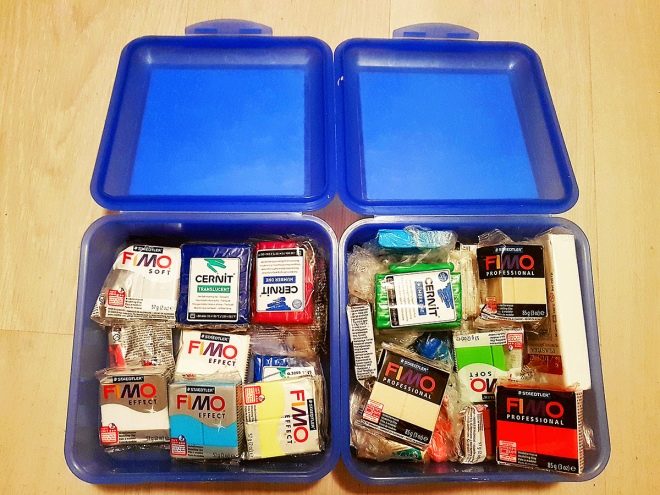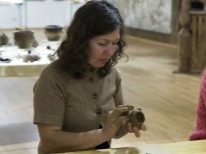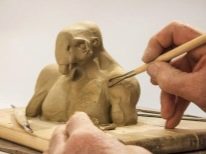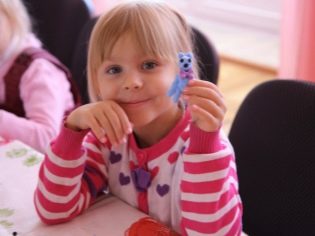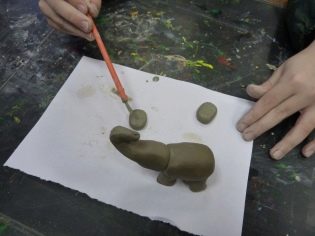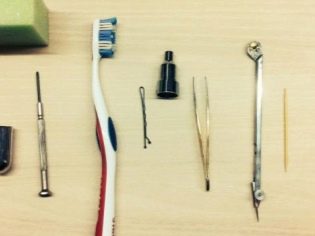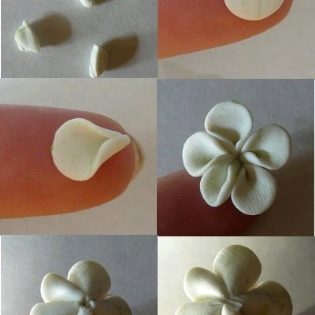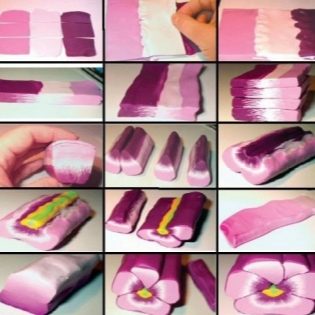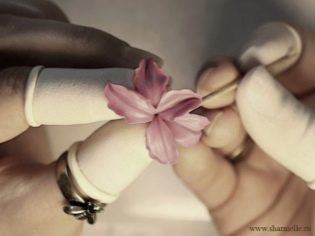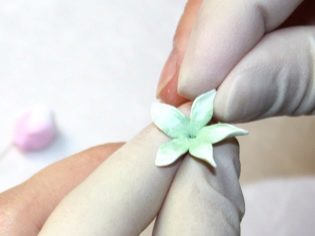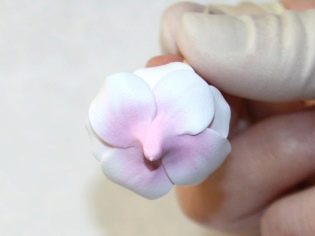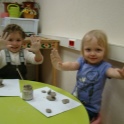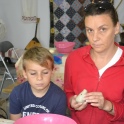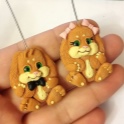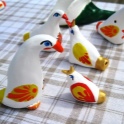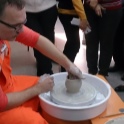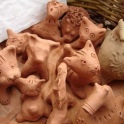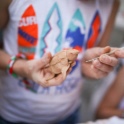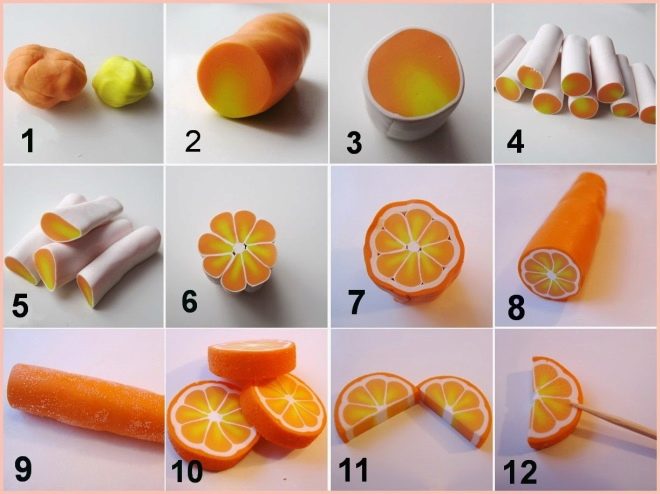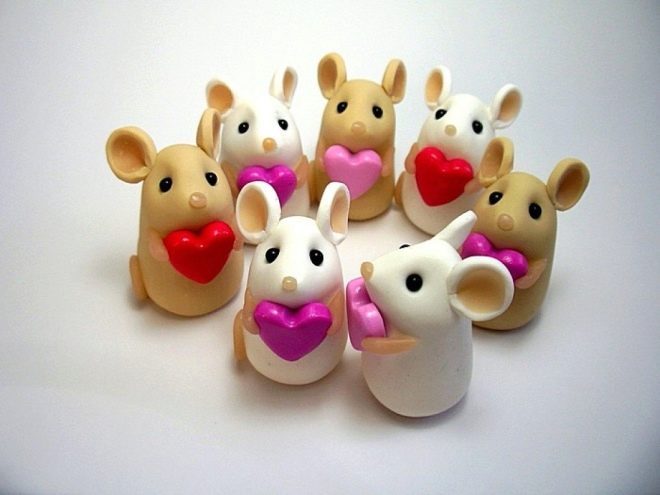The benefits of clay modeling, popular techniques and a master class for beginners
Once clay modeling was a routine and unremarkable profession, whereas today it appears as a form of child development creativity, an interesting hobby or even a creative way of earning. Nowadays, this is an old craft, which, it would seem, should disappear under the onslaught of modern technologies, suddenly, on the contrary, has acquired a second wind and is slowly getting out of fashion trends.
Clay molding is increasingly being introduced into the educational program of kindergartens and secondary schools, not to mention art schools, so this topic must necessarily be close to all parents.
The use of sculpting
Quite a lot has been written about the benefits of modeling for children, but the emphasis is not always on the fact that this activity brings certain benefits to people of any age. Naturally, at different stages of life, the practicality of such a hobby can be seen from different sides, therefore Let us dwell on the advantages of choosing in favor of clay modeling in more detail:
- For children 4-5 years clay modeling is probably just beginning - they take the first steps in it and acquire the first skills. For them, this occupation is useful for the rapid development of fine motor skills of hands, which are not yet able to move precisely and confidently, but quickly acquire such abilities thanks to constant practice, which is so similar to an exciting game. Perhaps, one cannot do without imagination either, because one can create something concrete not earlier than you imagine it in detail and carefully think through all the steps towards achieving the desired result.
All the same advantages are provided by modeling from other materials, the most popular among which is the usual clay, but clay requires more responsibility, because it still needs to be prepared beforehand, and thinking through the material preparation process once again makes the brain work.
- For children 6-7 years old priorities have already changed a little, at least, if they started from 4-5 years and really tried all this time. The elementary precision of the movements should have been worked out; now it was the turn of working out so precise movements that most people are not capable of. Now fantasy is starting to work much more actively - now the child is not just thinking out the implementation of a specific, but not a thought up idea, but he himself is trying to invent a composition, a figure design, a plot of crafts, and so on.
- Even for adults This activity is extremely useful and not so important when you started - in deep childhood or yesterday. First of all, working with clay is very soothing and relaxing, which in conditions of too active modern life is simply priceless. Why spend money on an expensive psychologist, if you can just sculpt in your free time? At the same time, having achieved some success, money can already be earned, because technology and own perseverance today allow us to achieve the level of skill that makes a person a professional, making a living from her favorite work.
Which clay is better for creativity?
A similar question is often asked by newcomers to themselves and those around them who are not yet completely oriented towards the topic, but already know that the concept of “clay for modeling” includes a number of varieties.The answer here cannot be unambiguous, since the diversity of supply is caused by the diversity of demand, and each mass has specific advantages that are ideally suited to achieve specific objectives.
Consequently, it all depends on what result the master expects to receive, although some general advice can still be given.
To do this, go through the most famous and popular options:
- In particular, for home use is better self-hardening claythat dries in the open air for a certain period of time. This somewhat limits the ability to edit the figures, but does not need a special oven to harden. Baked clay, however, can be brought to a solid state in an ordinary oven, but experienced people claim that it is more difficult, and it is not recommended because of the danger of poisoning during further cooking there.
- The choice of a huge number of people who in our time would like to try something similar to classic natural clay, very often falls on blue Cambrian clay. The blue variety is distinguished by a pleasant shade and the possibility of easy coloring in any desired color, relative ease of processing and a high degree of predictability of the final result. Among other things, it is sold both in the already diluted, that is, ready-to-work version, and in dry form, which is well suited for long-term storage of material.
- For the manufacture of flowers knowledgeable people highly recommend cellulose clay. This material is also known as zephyr clay for a clear resemblance to marshmallow in its raw form. The peculiarity of this raw material is that it retains its flexibility in a frozen form, thanks to which the petals made from it seem very natural.
Whatever type of clay you choose, try to make it vacuum. The fact is that any clay before modeling should be thoroughly mixed to a uniform state, but in the process of manual execution of this procedure air bubbles that do not contribute to the strength of the finished products fall into the mass. Under the conditions of large workshops, special machines are kneaded clay — extruders that can suck air from the working area, but for fans, special, already mixed and evacuated clay is sold.
What products can be made at home?
In fact, absolutely correctly anything can be molded from the clay of properly selected varieties. Since we are talking about modeling, in the first place, with children, special attention should be paid to what should like the kids themselves, and this, of course, toys. Most often, animal and bird figures, as well as fairy-tale heroes, act as a full-fledged game object made with their own hands - clay Koschey would look very cute. To increase the credibility of the gameplay, you can fashion a house, toy food and much more.
In schools, children are at least theoretically prepared for adulthood, so crafts for school and kindergarten are very diverse - among them there is something that is difficult to play, but you can be proud of putting on the shelf.
A popular plot is a clay oak branch, as a playing field with an eye on the future, practical use can be molded a whole relief with hills and valleys, fields and roads.
With the achievement of a level sufficient for earning money, creative people usually switch to more profitable things, among which ceramic clay decorations, which imitate many other materials, are particularly popular. Among women, the modeling of dishes is also a great success, because you can give your own designer cups or a teapot for your loved ones for a holiday, and creating your own pots for home plants will always allow you to have a trump card to show off to guests.
Methods and techniques of hand sculpting
There are quite a few different techniques for sculpting clay products by hand, and to create complex masterpieces, craftsmen usually use several of them at once. In fact, a truly talented person does not have to act on any patterns, because his own imagination is enough for him to figure out how to achieve the desired effect, but still consider Some of the most popular techniques for example:
- Sculptural modeling. On the one hand, it is technically the most difficult way to create clay figures, on the other - the only modeling technique that does not put forward any restrictions on the form of the result. It represents the formation of a future product from a single piece of clay with the help of hands and small improvised tools like stacks.
- On the potter's wheel. The second oldest technique, which at one time allowed our ancestors to make neat round dishes, even if the hands of the master still do not have perfect geometric accuracy. As in the old days, today it is used almost exclusively for sculpting pots and jugs, less often for creating large round objects of any other purpose. It is best combined with natural clay for firing, other materials are practically not used.
- Rope molding. A very peculiar technique in which the future product, whether it is an empty jug inside or a full-fledged huge statue, is made of such “bricks” in the form of harnesses. They are stacked one on top of the other, gradually lifting the product from the bases to the future top, and the places of the joints between the harnesses are smeared separately with liquid clay. This technique allows you to create huge forms with virtually no loss of geometric correctness.
How to use clay?
Natural clay, unlike most varieties of modern polymeric clays, is not ready for modeling at once, it will have to be brought to the necessary condition. To do this, it must be medium moisture, sufficient for modeling.
You can dilute clay at home with ordinary water. If the material is so dry that it has managed to become covered with a hard crust, it is advised to crumble it into pieces (but not very finely), moisten the surface and wrap it up with a very wet towel. When the clay is saturated with this small amount of moisture and it becomes just dry, already without a crust, add a little more water and try to knead with your hands until a homogeneous, viscous state.
It is possible to achieve an sensible result only in this way, to quickly soften a dried piece, simply by throwing it into the water, will not work, since the outer layer will “flow” and the inner layer will remain a stone.
If the clay, on the contrary, is too wet, you can try to squeeze out its small pieces by hand to get the water out. To speed up the process, the wet clay unfolds on a perfectly dry gypsum slab, at their maximum contact, the stove will take away the moisture itself.
How to store?
Methods for storing clay for modeling differ greatly, depending on what the material actually is, and what components are included in its composition. Perhaps the easiest way to divide all types of clay into self-hardening and baking, however, if there is an instruction regarding the material that you hold in your hands, it is better to focus on it immediately.
Self-hardening masses for modeling require storage in strictly sealed conditions, because their plasticizers and water evaporate very quickly in the open air, causing the material to harden, losing plasticity. The fact that you did not have time to give the mass the form that you would like would not matter - it will be impossible to restore the clay.
Remove from the hermetic jar such a mass is needed only directly for modeling, and you need to sculpt quickly, without interrupting, until the project is completed.
With baked masses, the situation is a bit simpler - hermetic packaging for them will not be superfluous, but it is not mandatory. When excess moisture gets in, such masses are dried (in particular, in a natural way), and for greater softening, you can add some water or any plasticizers to them, depending on the type of material and its composition.
The main tools of the sculptor
The main tool, without which not a single sculptor can do is his hands, however, only a true master can create a masterpiece with his bare hands. All the rest will need at least stacks of various shapes. This simple tool is designed either to cut pieces of material (most often flat “pancakes”), or to impart a certain precise shape to the surface, such as dents, cuts, undulations.
Even for a beginner, it is advisable not to be limited to one stack, and a professional should have a whole set. Other cutting tools are used to cut many polymer clays, even ordinary knives and scissors can sometimes be useful.
Quite good assistant in the process of creating plausible imitations of something is the so-called textured sheets. They represent a thin sheet with an imprint of the texture of a material (for example, tree bark) or with a relief pattern applied. It is enough to attach such a sheet to the surface of the product and press it a little to get the necessary texture on the surface of the craft - it saves a huge amount of time and allows you to create good things even for relative beginners.
Master class for beginners
Sculpting flowers with your own hands is quite a difficult task, however, many women are fond of modeling in general for this very reason. To achieve the most believable result make flowers better from Japanese clay "Orchid" or any other similar material.
For a start, it is worth preparing all the necessary materials - marshmallow marsh shades of flowers and their stems, a sharp stationery knife that will not leave tears along the cutting line, liquid clay-gel, several toothpicks, and, if this type of flower requires, additional decorations, for example, settings.
Petals can be made by incompletely cutting a small “drop” of material and gently bending them apart. They are rolled to a flat state with the help of toothpicks, with which future petals are pressed to the hand, the streaks are made with the sharp end of the toothpicks, the tips are wrapped inside the flower cup by winding on the same simple tool. If necessary, mount settings that imitate stamens are mounted on top. The individual parts are neatly glued together with liquid gel and in this form are baked.
Ideas for inspiration
Novice masters often lose heart, when several independently invented ideas do not lend themselves to realization, but for something simpler, but at the same time more interesting, there is not enough imagination. Here are just a few examples of crafts that do not require extraordinary skills and craftsmanship, but still look amazing.
The first example very clearly shows how, without any extraordinary efforts, to make a rather interesting hand-made article, which will immediately lift the beginning master's mood.
The second sample is a gingerbread man. It may not look as cute as an orange wedge, but in some ways it is a bit more complicated in terms of performance, so it will bring even more pleasure if it works out in the end. In general, nothing too complicated.
The third example is a little mouse, one of the most beloved themes of the masters involved in modeling. Here, at a minimum, you will need certain skills in mastering the stack, and the shape of the body of the animal is somewhat more complicated, but the heart can be taken away for the first time - it will still be very beautiful and bright.
In the video below you can see interesting little animals that can be made from clay.
